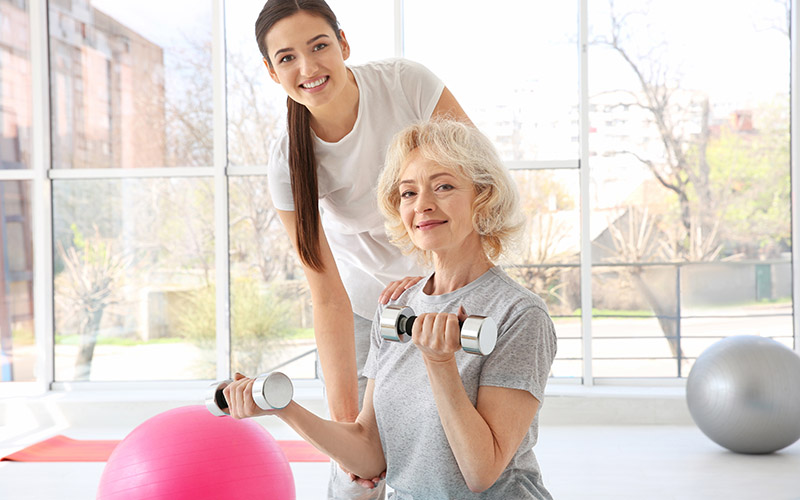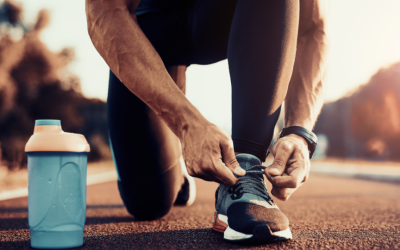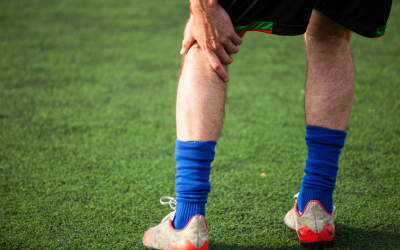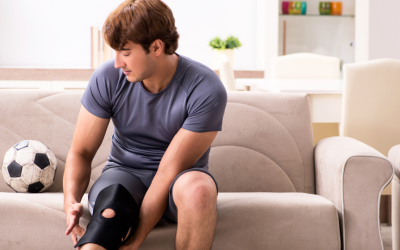Regardless of age, race, or gender, healthy bones are vital for everyone. Bones are living tissues that are constantly regenerated and destroyed.
Medical conditions, medications, and lifestyle choices can affect our bones during middle age. The decrease of estrogen in menopausal women accelerates bone loss. Men start losing bone mass around the age of 70.
It’s never too early or late to start caring for your bones. Read on to learn more about osteoporosis and the steps to achieve stronger bones.
What is Osteoporosis?
Osteoporosis is a chronic condition that causes bones to weaken and break easily. Osteoporosis prevents bones from rebuilding after degradation.
People with osteoporosis are more susceptible to sudden and unexpected bone fractures. Osteoporosis usually develops without symptoms, and it isn’t recognized until it causes fractures.
The International Osteoporosis Foundation revealed that one in three women over the age of 50 and one in five men would have an osteoporotic fracture in their lifetime. Experts predict that by 2025, osteoporosis will cause three million fractures, costing $25.3 billion annually.
According to research, osteoporotic fractures cause more hospitalizations in 55+ women than breast cancer, heart attacks, and strokes.
Many people believe that osteoporosis is a normal part of aging. However, we build strong bones from childhood and reach peak bone mass between 25-30 years of age.
Who is at risk of Osteoporosis?
The following are some of the risk factors that contribute to the risk of osteoporosis:
- Sex: Women are more likely to have osteoporosis than men.
- Age: According to several studies, one in two women and one in four men over 50 years would experience an osteoporotic fracture.
- Race: Osteoporosis is more common among people of Asian or European origin. African-American and Hispanic women are still at risk.
- Hereditary factors: A family history of osteoporosis may indicate a higher risk.
- Body frame: Individuals with a small body frame are more vulnerable, as they may not have enough bone mass to restore the loss.
- Hormone levels: Women who have gone through menopause have a low estrogen level. Also, cancer treatments to reduce testosterone in men can cause bone loss.
- Dietary factors: Low calcium intake may result in decreased bone density. Some surgeries may cause reduced nutrient absorption.
- Lifestyle choices: Living a sedentary lifestyle puts you at a higher risk of osteoporosis than people who live a more active lifestyle. Smoking and excessive alcohol intake increase your risk.
- Medical conditions: Patients with certain medical conditions are more prone to osteoporosis.
- Medications: Some medications like steroids, treatments for breast cancer, and seizure treatment can lead to bone damage.
Steps to Help Achieve Strong Bones
Here are some steps to help you keep your bones in the best possible shape and prevent osteoporosis.
- Regular Screening
Having a bone density test (DEXA scan) will go a long way in helping you know how strong your bones are. This painless scan takes about 15 minutes.
Women over the age of 50 and men over age 70 should have regular screening. A follow-up scan may not be needed for up to a decade if you have a normal “T-score.” However, a follow-up scan is required between three to five years for people with low bone density and every two years for patients with osteoporosis.
- Eat for Healthy Bones
Up to 90% of adult bone mass is developed by age 18 in girls and 20 in boys. As a result, focusing on nutrition is critical to supporting bone mass development. Some nutrients to focus on include:
- Calcium: Helps build and preserve bones. According to the Institute of Medicine, 1,000 mg of calcium is recommended daily for women below age 50, and 1,200 mg for women above 50. Men below the age of 70 should also take 1,000 mg, and men over 70 consume 1,200 mg. Dairy and fortified plant-based milk (almond, soy, and rice milk), cheese, yogurt, calcium-fortified orange juice, winter squash, edamame, calcium-fortified tofu, canned sardines, salmon (with bones), and almonds are all excellent sources of calcium.
- Vitamin D: Helps the body absorb calcium. Most adults older than 50 need 800 to 1,000 international units daily. Cod liver oil, salmon, swordfish, tuna, dairy, orange juice, and plant milk fortified with vitamin D are great sources of vitamin D.
- Protein: Protein deficiency has been linked to an increased risk of fractures. Men and women over 50 require 56 grams and 46 grams of protein daily respectively.
- Do Exercise
Physical activity can help you maintain bone density, even after menopause. Weight-bearing and strength-training exercises help to increase bone mass and decrease bone loss. Yoga, Pilates, and tai chi can help minimize the risk of falling and fractures.
Daily, aim for 30 to 60 minutes of moderate exercise or 20 to 30 minutes of vigorous exercise, followed by 10 to 15 minutes of resistance training. Before beginning any workout program, consult your physician.
- Quit Smoking & Limit Alcohol Intake
Smoking can cause bone loss and slows down the healing of any fracture. Excessive alcohol intake can cause more falls and interfere with bone-growth cells, causing bones to break easily. Quit smoking, and avoid excessive alcohol and caffeine intake to reduce bone loss.
Diagnosis
DEXA scan helps you measure your bone mineral density (BMD). Your BMD is then compared to the standard readings to get your T-score.
- T score of -1 to +1 is considered normal bone density.
- T score of -1 to -2.5 indicates low bone density.
- T score lower than -2.5 is categorized as osteoporosis.
If you suspect you’ve incurred a hand fracture, hip fracture, arm fracture, or some other broken bone, schedule your appointment to see a fracture care specialist at Tennessee Orthopaedic Specialists.
The sooner you get the care you need, the better your chances of healing correctly, avoiding pain and range of motion issues. With offices throughout East Tennessee, you can find a clinic near you to serve you.




